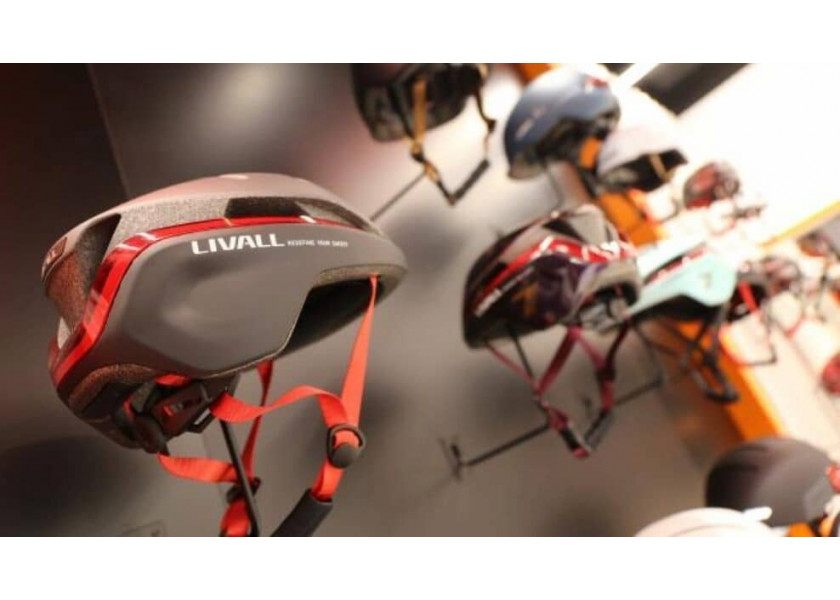
Technology and safety: Smart helmets in the world of road cycling
Road cycling is one of the most demanding disciplines, where speed, performance, and safety are fundamental aspects. For cyclists looking to always stay at the forefront, smart helmets for road cyclists are becoming an essential piece of equipment. These helmets not only protect but also incorporate advanced technology to improve both safety and the riding experience.
In this article, we explore how smart helmets are revolutionizing the world of road cycling, what technologies they include, and how you can choose the right helmet for you.
Why choose a smart helmet for road cycling?
A smart helmet for road cyclists is much more than just a safety accessory. These helmets are equipped with advanced technology that not only enhances impact protection but also offers innovative features to ease the cyclist's experience. Among their benefits are:
- Increased visibility thanks to integrated lights.
- Bluetooth connectivity for receiving calls or listening to music.
- Impact sensors that detect falls and send emergency alerts.
Although these helmets do not replace traditional equipment, they incorporate innovations that enhance both cycling safety and the comfort of road cyclists.
Technology in helmets: Beyond basic protection
Helmet technology has advanced significantly in recent years. While traditional helmets were limited to offering passive protection, smart helmets incorporate active technologies that improve the riding experience and safety. Some of the standout technologies include:
Integrated LED Lights
One of the most common features in smart helmets for road cycling is the inclusion of integrated LED lights. These lights not only increase the cyclist's visibility in low-light conditions, but they also provide greater safety by making the cyclist more visible to drivers and other cyclists on the road. Many models feature both front and rear lights, which can be activated and adjusted according to the cyclist's needs.
Bluetooth and Connectivity
The ability to stay connected while pedaling is one of the most appealing advances. Smart helmets with Bluetooth allow cyclists to receive notifications, answer calls, or listen to music without taking their hands off the handlebars. Additionally, some helmets also enable connection to navigation systems, making it easier to follow routes without looking at your phone or GPS.
Impact Sensors and Emergency Alerts
Safety is one of the most important priorities when choosing a cycling helmet. Some smart helmets for road cyclists feature impact sensors that detect falls. If a cyclist falls, these sensors can automatically send an alert to pre-established emergency contacts. This feature is especially useful when cycling on isolated roads or mountain routes, where accidents can go unnoticed.
Improving safety with technology
Cycling safety is a key topic, and smart helmets are a crucial tool for improving it. In addition to lights and connectivity, smart helmets incorporate additional features that reinforce cyclist protection:
MIPS (Multi-Directional Impact Protection System)
One of the most important technological advances in cycling helmets is MIPS, a protection system that reduces the brain's rotation in case of a fall. This system allows the helmet to slide in a controlled manner upon impact, reducing the rotational forces that can cause severe brain injuries. Many smart helmets already include MIPS as a standard feature, offering an extra layer of safety in helmets for road cyclists.
Aerodynamic and Lightweight Design
Smart helmets not only incorporate advanced technology, but they are also designed to be lightweight and aerodynamic, two essential aspects for road cyclists seeking performance. A heavy or poorly fitting helmet can be distracting and reduce speed on descents or during long rides. Therefore, smart helmet models are made with high-quality materials that combine durability and lightness without compromising safety.
Comfort and fit: Key factors in choosing the helmet
When choosing a smart helmet for road cycling, you should consider not only the technology and safety but also the comfort and fit of the helmet. A poorly fitted helmet can be uncomfortable and, worse, not protect you properly in case of an accident.
Customizable Fit
Most smart helmets come with a dial adjustment system that allows for quick and precise customization of the helmet's size. This ensures a perfect and comfortable fit throughout the ride. Additionally, road helmets often have an inner padding that enhances comfort, especially during long rides.
Ventilation
Road cycling involves long periods of physical activity, so ventilation is another crucial factor. Smart helmets include strategically placed air vents to keep your head cool during exertion, preventing overheating.
Durability and resistance
Smart helmets must be durable not only in terms of safety but also in terms of longevity. Road cyclists face a variety of weather conditions, so a quality helmet must be resistant to water, sun, and other weather elements. Furthermore, the materials used in helmet construction must guarantee a long service life, even after multiple impacts.
A smart helmet for safer cycling
Choosing the right smart helmet for road cycling is not only about protection but also about incorporating the technology in helmets that enhances the cyclist’s experience. From Bluetooth connectivity to emergency alert systems, a smart helmet can make your cycling experience safer and more comfortable.
When choosing a smart helmet, make sure it complies with safety standards, fits well, and offers features that align with your needs. Never underestimate the importance of technology in modern helmets, as it can make a significant difference in your safety and performance on the road.